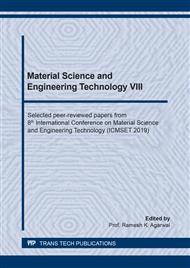p.283
p.293
p.299
p.305
p.311
p.317
p.323
p.329
p.335
Study of Soil Layer Stratigraphy Based on Georesistivity and Geological Techniques
Abstract:
The purpose of study was to determine the structure of the studied soil layer based on measurement of geo-resistivity with the Wenner configuration and geotechnical drilling method. Geotechnical drilling was one way of soil/rock investigations to determine the parameters soil layers. Based on the objective, field tests and laboratory tests were carried out to support scientific investigations. The results of measurements in the field using geo-resistivity were performed to a depth of 23 meters, resulted in 2 types of soil sediment layers namely clay and sand. At a depth of approx. 8 meters, the groundwater level was found and through laboratory tests, the results of geotechnical drilling gave 2 types of soil classification to a depth of 15 meters, i.e CH and ML. In general, the results of the geo-electrical and drilling tests represented the soil real conditions in developing the stratigraphy of the subsurface layer of the soil. It showed that in the first layer, the sediment layer resulting from the breakdown of the initial rock or sediment layer which had undergone transportation of sedimentary layers in the form of clay, silt or sand and did not experience compaction so that it has a large resistivity value. The next layer associated with regional geological maps are dominated by sand.
Info:
Periodical:
Pages:
335-340
Citation:
Online since:
June 2020
Keywords:
Price:
Сopyright:
© 2020 Trans Tech Publications Ltd. All Rights Reserved
Share:
Citation:


